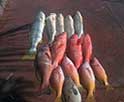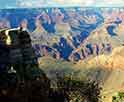Saharan Dust: Its Journey to the Americas and Global Impacts
The Sahara Desert's Dusty Reach: Understanding Trans-Atlantic Dust Plumes
Reading time : 1 minute,
Discovery Chepe Id-745-ECO
Published in
06-10-2025

Every year, an extraordinary journey unfolds in the skies above the Atlantic. Millions of tons of dust rise from the Sahara Desert and travel thousands of kilometers, reaching the Caribbean, the Gulf of Mexico, and even parts of South America and the United States. This is not science fiction it's a real, natural phenomenon that connects continents and impacts ecosystems, weather, and health.
Where does it start?
The process begins in North Africa, particularly in regions like Chad and Niger, where dry winds lift fine desert sand into the atmosphere. These winds - known as the Saharan Air Layer - are typically strongest between late spring and early fall.
How does it cross the ocean?
The dust doesn't fall back to Earth immediately. Instead, it rides on strong easterly trade winds, flying high above the Atlantic Ocean at altitudes of 1.5 to 6 kilometers. This airborne journey can last several days before the dust settles over the Americas.

From Africa to America: The Incredible Journey and Influence of Saharan Dust
1- Scientific Explanation
a) The sun heats the desert ground, causing warm air to rise and carry dust particles upward.
b) Once in the atmosphere, these particles enter the jet stream or trade winds.
c) The air currents push the dust westward, spreading it across vast distances.
2- Dust Arrival in the Americas
Depending on wind speed and weather patterns, the dust can reach:
The Caribbean in 3 to 5 days
The southern U.S. within a week
Parts of Central and South America shortly after
Positive Effects of Saharan Dust
This giant cloud of particles may seem like a nuisance, but scientists have discovered many surprising benefits:
Soil Fertilization: The dust is rich in phosphorus, a key nutrient for plant growth. It helps fertilize the Amazon rainforest, which depends on external mineral sources due to heavy rainfall leaching away nutrients.
Ocean Productivity: Some of the minerals feed marine phytoplankton, the base of the ocean food chain.
Hurricane Suppression: The dry air and dust particles can inhibit the formation of tropical storms and hurricanes by stabilizing the atmosphere and reducing moisture.
Negative Effects on Health and Environment
However, it's not all good news. The dust can also pose serious challenges:
Air Quality Issues: Fine particles in the dust can worsen air pollution and affect people with asthma, allergies, or respiratory diseases.
Impact on Weather: While the dust can suppress hurricanes, it may also increase drought conditions in some regions by reducing rainfall.
Visibility Problems: In areas where the dust is dense, it can limit visibility and cause problems for aviation and daily transportation.
How to Prepare and Stay Safe
1- Check local air quality reports regularly, especially during the dust season (June to August).
2- Use masks or air purifiers if you have respiratory conditions.
3- Keep windows closed during high dust days.
4- Stay informed via trusted sources such as NOAA or the World Health Organization.
Global Connection in the Air
The story of Saharan dust is a reminder that our planet is deeply interconnected. A wind that begins in the deserts of Africa can help trees grow in Brazil, affect air quality in Texas, and slow down hurricanes in the Caribbean.
In the end, the dust that dirties your car windshield might also be feeding the planet and shaping our climate. Nature, in all its complexity, never stops surprising us.
By understanding the sky above us, we can better prepare for the world around us.
See Also
Discovery Chepe
Most read...















